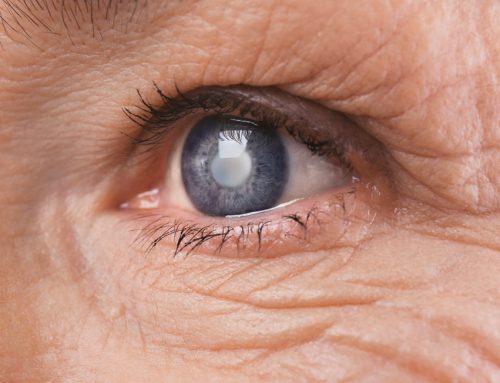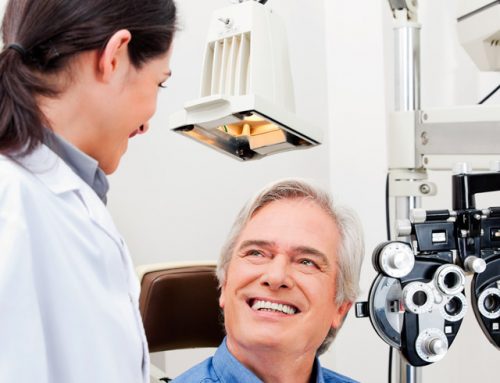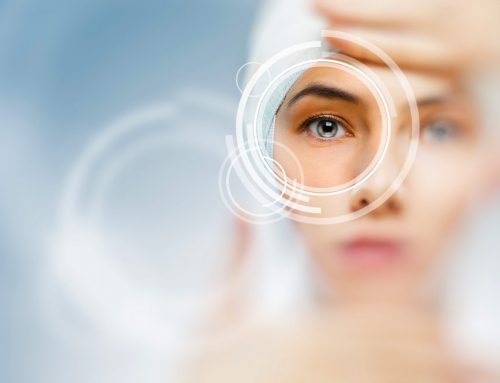Cataracts are a very common eye condition. As we get older the lens inside our eye gradually changes and becomes less transparent (clear). A lens that has turned misty, or cloudy, is said to have a cataract. Over time a cataract can get worse, gradually making your vision mistier. A straightforward operation can usually remove the misty lens and replace it with an artificial lens to enable you to see more clearly again.
About Cataracts
When you look at something, light passes through the front of your eye, and is focused by the cornea and then the lens onto the retina. The lens is normally clear so that light can pass directly through to focus on your retina (the lens is clear because of the way the cells in the lens are arranged).
The lens focuses light onto the retina, which converts the light into electrical signals. A network of nerves delivers these signals from the different parts of the retina to the optic nerve and then onto the brain. The brain interprets these signals to “see” the world around us.
The lens can change shape, allowing us to focus on objects at different distances, called “accommodation of vision”. As we get older, the lens isn’t able to change shape as well as it used to; even people who can see clearly in the distance without glasses will need reading glasses to see things up close. This process is not caused by a cataract.
Cataracts result from changes in the way the cells of the lens are arranged and their water content, which causes the lens to become cloudy instead of clear. When this happens, light cannot pass directly through the lens and you may notice problems with your vision. A cataract is not a growth or a film growing over the eye, it is simply the lens becoming misty.
Causes
Cataracts can be caused by a number of things, but by far the most common reason is growing older. Most people over the age of 65 have some changes in their lens and most of us will develop a cataract in time. Apart from getting older, the other common causes of cataract include:
– Diabetes
– Trauma
– Medications, such as steroids
– Eye surgery for other eye conditions
– Other eye conditions.
In general, the reason why you have developed a cataract will not affect the way it is removed. Most cataracts are caused by natural changes in the lens, which happen as you get older. However, the following factors may be involved in cataract development (please note that these are only suggested causes which are the subject of ongoing research):
– Tobacco smoking
– Lifelong exposure to sunlight
– Having a poor diet lacking antioxidant vitamins.
Symptoms
Cataracts usually develop slowly and although symptoms vary there are some symptoms that most people experience. Most people will eventually develop a cataract in both eyes, though one eye may be affected before the other. When your cataract starts to develop, you may feel your sight isn’t quite right. For example, if you wear glasses you may feel that your lenses are dirty, even when they’re clean. Gradually, you may find your sight becomes cloudier and more washed out. Edges of stairs or steps become more difficult to see and you may feel you need a lot more light to read smaller print.
Another common symptom of a cataract is a problem with bright lights. Lights can seem to glare, or you may find that the headlights of a car dazzle you more than they used to. You may also notice a slight change in your colour vision – things may appear more yellow than before. This often happens if one eye develops a cataract first and colours look different when you compare one eye with the other.
If you notice any of these changes, you should have your eyes tested by an optometrist (optician) who will be able to tell whether you have a cataract or not. The optometrist will then discuss the degree to which the cataract is affecting your vision and if you agree, refer you via your GP to the eye clinic. You may be told during the eye test that you have early cataract or initial signs of a cataract which does not need referral. If you are unsure about anything during the eye test then ask to have it explained. Eye tests are free for everyone in Scotland and for everyone over sixty years old in the UK. Many other people also qualify for free eye tests.
If a cataract isn’t removed, your sight will become increasingly cloudy. Eventually, it will be like trying to see through a frosted window or a heavy net curtain or fog. Even if your cataract gets to this stage, it can still be removed and your sight will be almost as it was before the cataract developed.
Treatment
The only effective treatment for cataracts is surgery to remove your cloudy lens and replace it with an artificial lens implant. This is done by an ophthalmologist (eye specialist) at a hospital. Lasers aren’t used to remove cataracts and there is no evidence to suggest that changing your diet, taking vitamins or using eye drops can cure cataracts. Cataract surgery is available free on the NHS.
Removing cataracts
The operation to remove your cataracts can be performed at any stage of their development. There is no longer a reason to wait until your cataract is “ripe” before removing it. However, because any surgery involves some risk, it is usually worth waiting until there is some change in your vision before removing the cataract. This is something to discuss with your optometrist as a good time to refer may vary from person to person.
Most people choose to have their cataracts removed when the change in their vision starts to cause them difficulties in everyday life. The timing of this varies from person to person. If you have problems in bright light, or you find reading or getting out and about, cooking or looking after yourself increasingly difficult then it may be time to consider having the cataract removed. When you attend your appointment in the eye clinic you need to make clear to the specialists any everyday problems you are having.
When you are first referred to the eye clinic you will have an outpatient appointment to examine your eyes and then discuss the best options for you. This is the time to ask questions and it is useful to write down any you have thought of beforehand.
Many people with cataracts are still legally able to drive. If you have any concerns about whether you should be driving, your optometrist should be able to tell you whether your sight is within the legal limits for driving. Sometimes people may be legally able to drive but might find driving difficult in bright sunlight or at night. If this is the case, then you may think it is a good time to consider having your cataracts removed.




